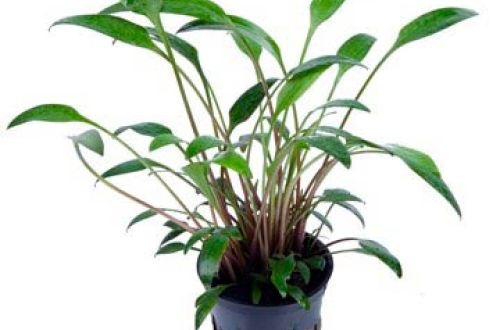
Cryptocoryne Willis
Cryptocoryne Willis, scientific name Cryptocoryne willisii. This aquatic plant is native to Southeast Asia and grows naturally on the island of Sri Lanka. Known in the aquarium trade for many decades, however, it was initially misidentified as Neuville’s Cryptocoryne and it was with this name that it entered the aquarium. Back in 1976, Niels Jacobsen identified this error, proving that the true Cryptocoryne nevillii is a completely different, not even related, species. Nevertheless, confusion persists to this day, so both names can be conditionally considered synonyms and their own generalized name Cryptocoryne x willisi “nevillii” was invented for them.

Further research has shown that Cryptocoryne Willis is a highly variable species and has several natural hybrids with Cryptocoryne parva, Cryptocoryne beckettii and Walker Cryptocoryne. Such hybrid plants are usually labeled as Cryptocoryne x willisii “lucens”.
The plant forms dense bushes of many green leaves (18-20 cm long), collected in a rosette – growing from a single center without a stem. As a rule, varieties of “nevillii” have short oval-shaped leaf blades on long petioles. In “lucens” leaf blades are narrowly lanceolate. In both cases, the surface of the leaves is dense and smooth. Often the varieties cannot be distinguished, and in some cases they will be similar to Cryptocoryne parva.
Regardless of which plant was purchased, they all have similar requirements for the growing environment. Optimum conditions for growth are achieved in soft warm water and nutrient soil. The introduction of additional dressings is not required if fish and other aquatic organisms live in the aquarium, which are a natural source of organic matter (excrement). Not demanding on the level of illumination, able to grow both in bright light and in the shade. Can be used in paludariums with high humidity.




